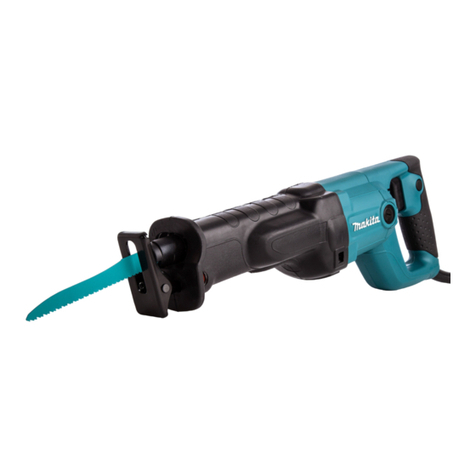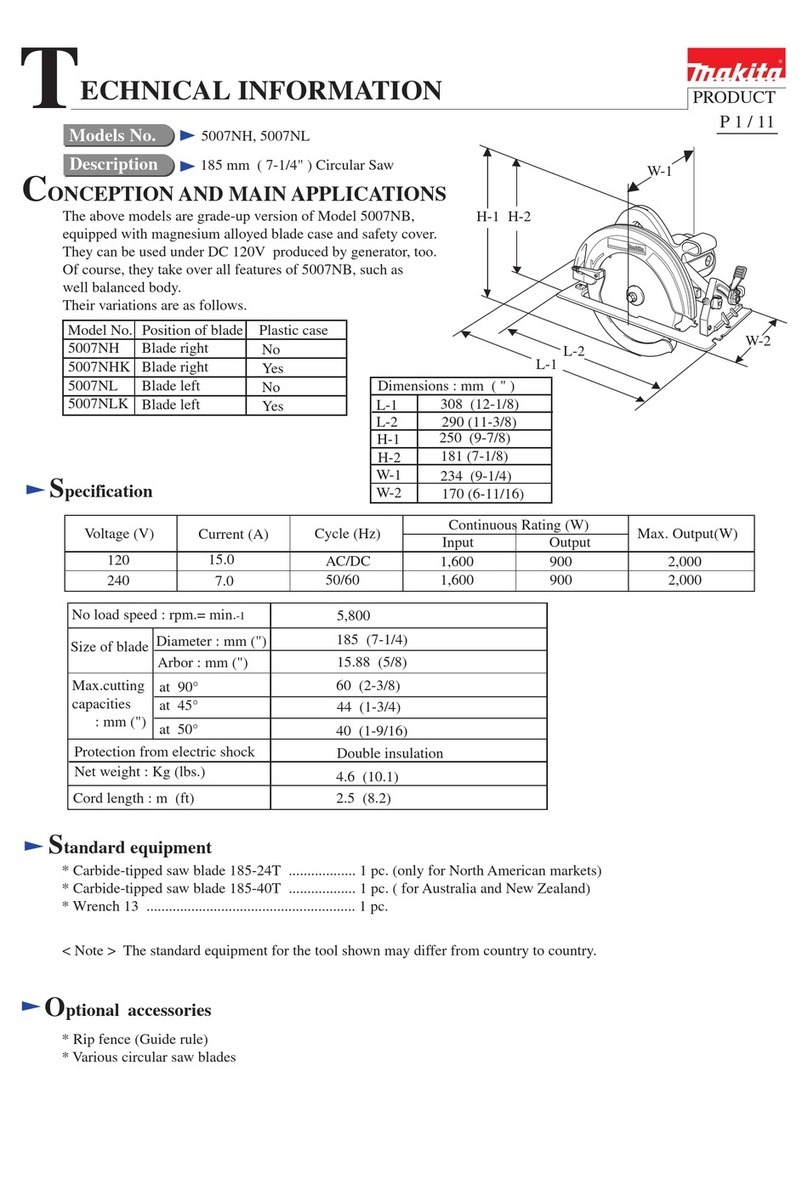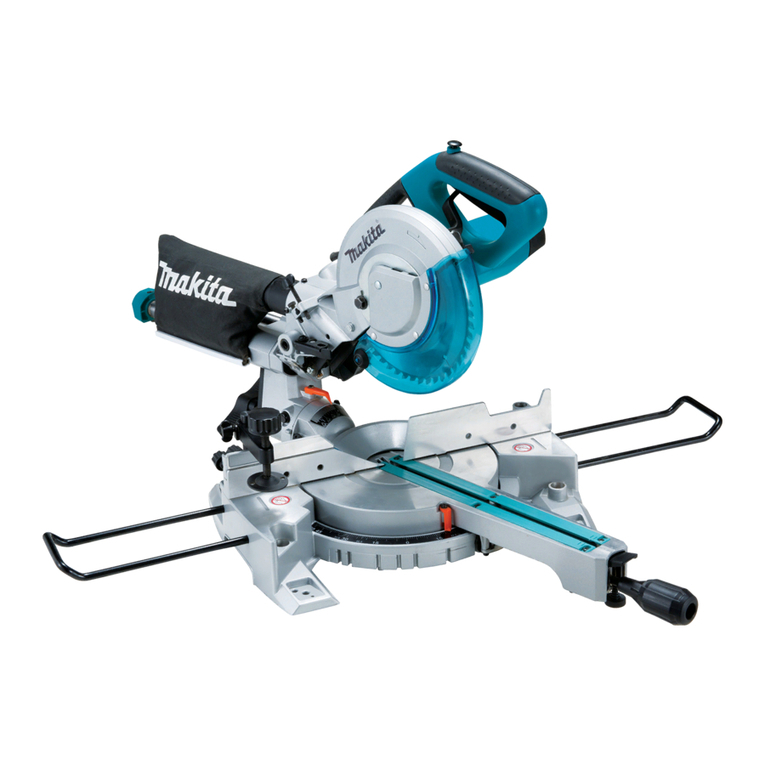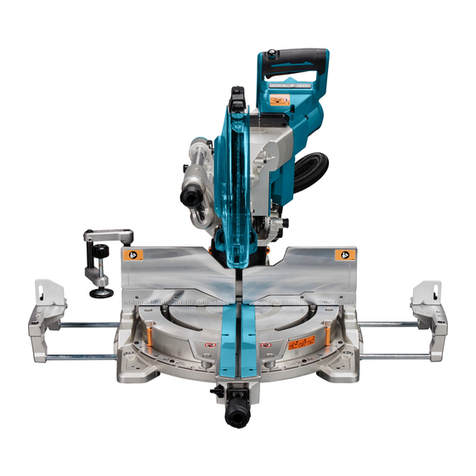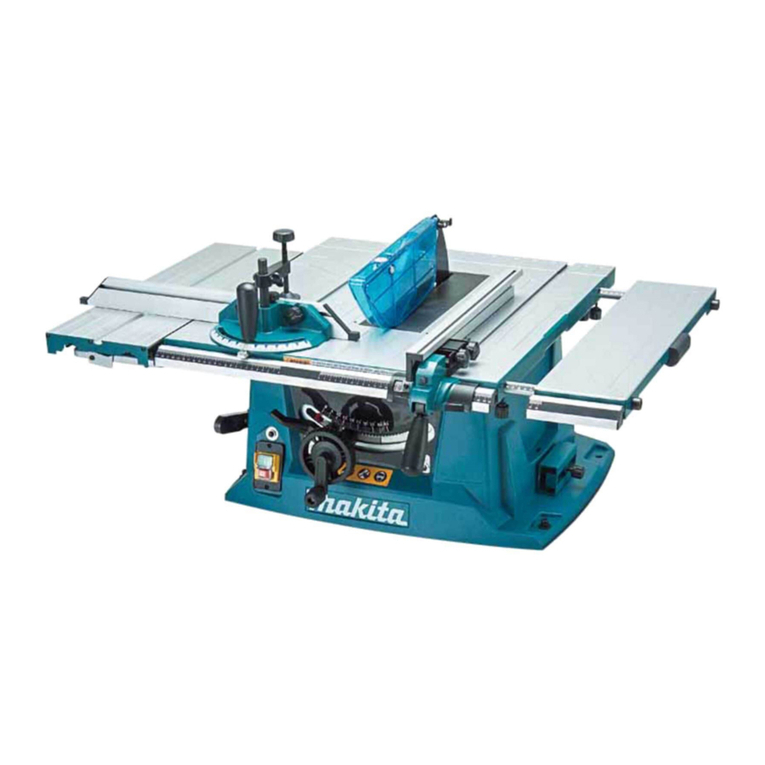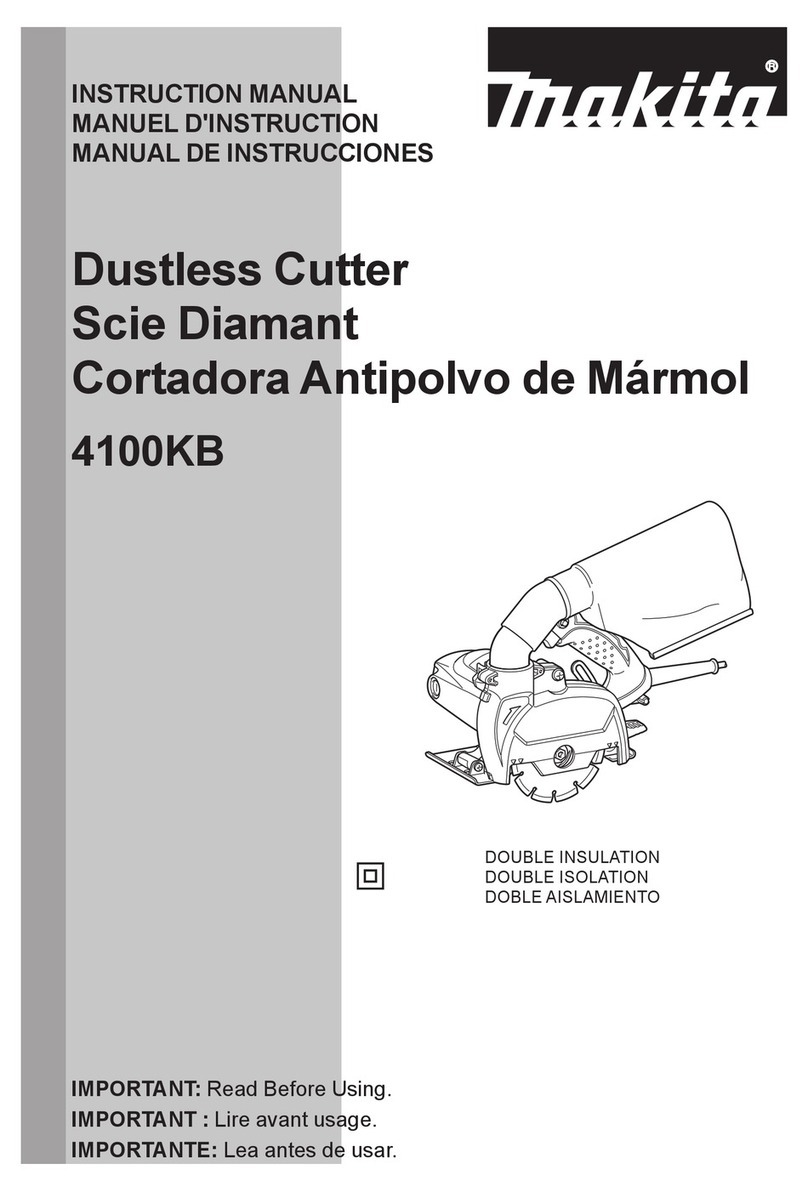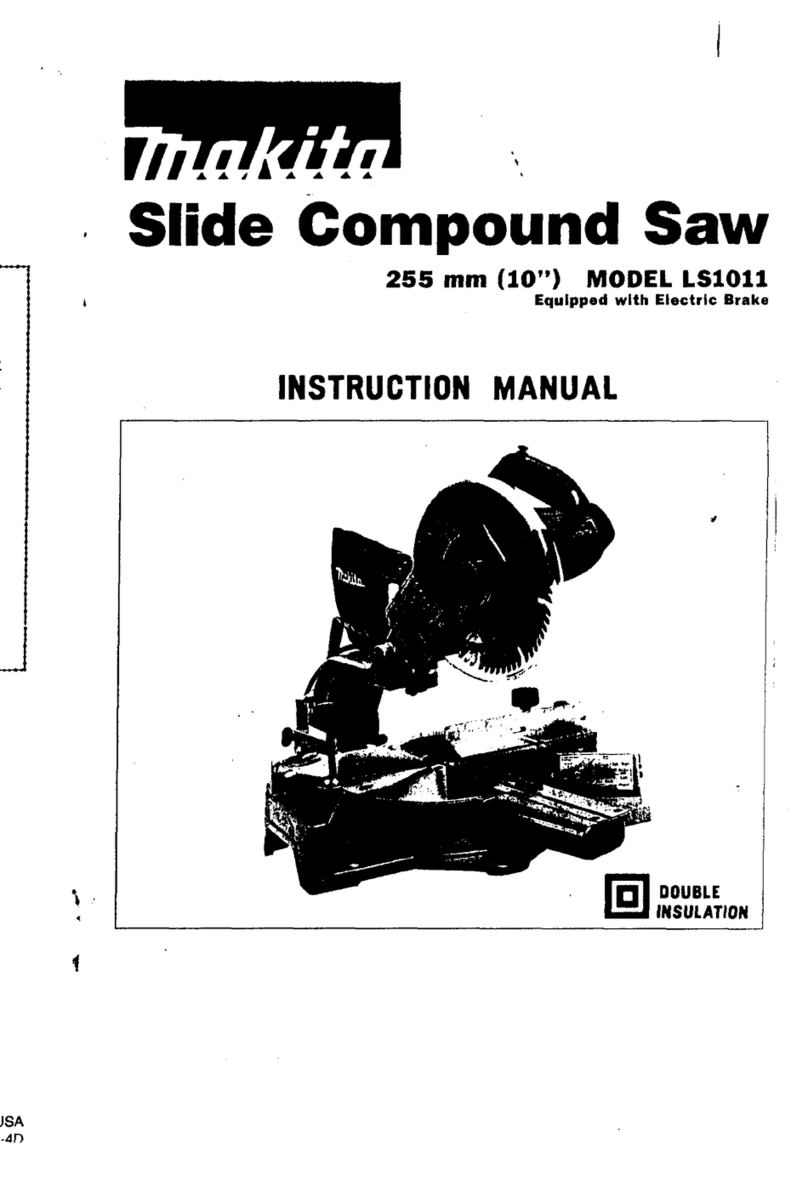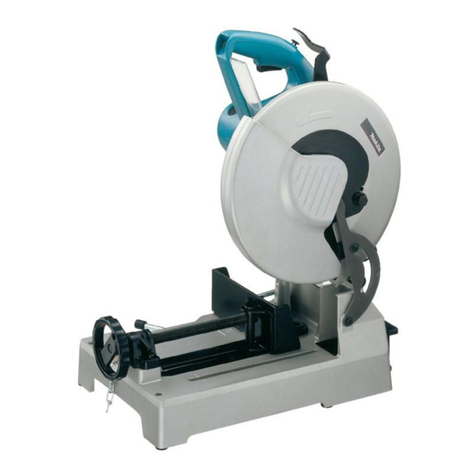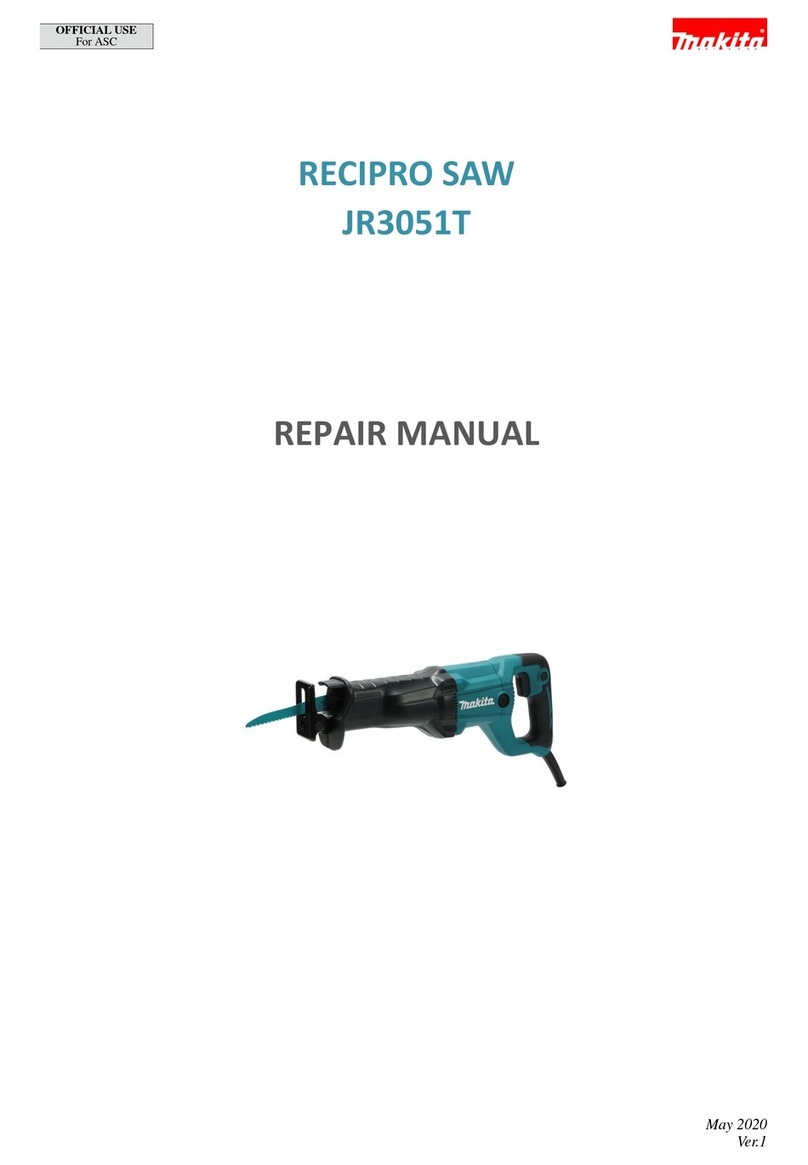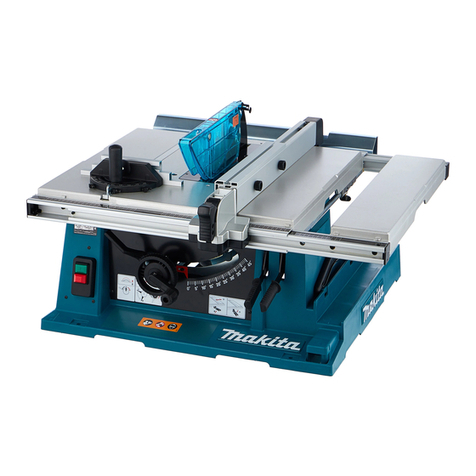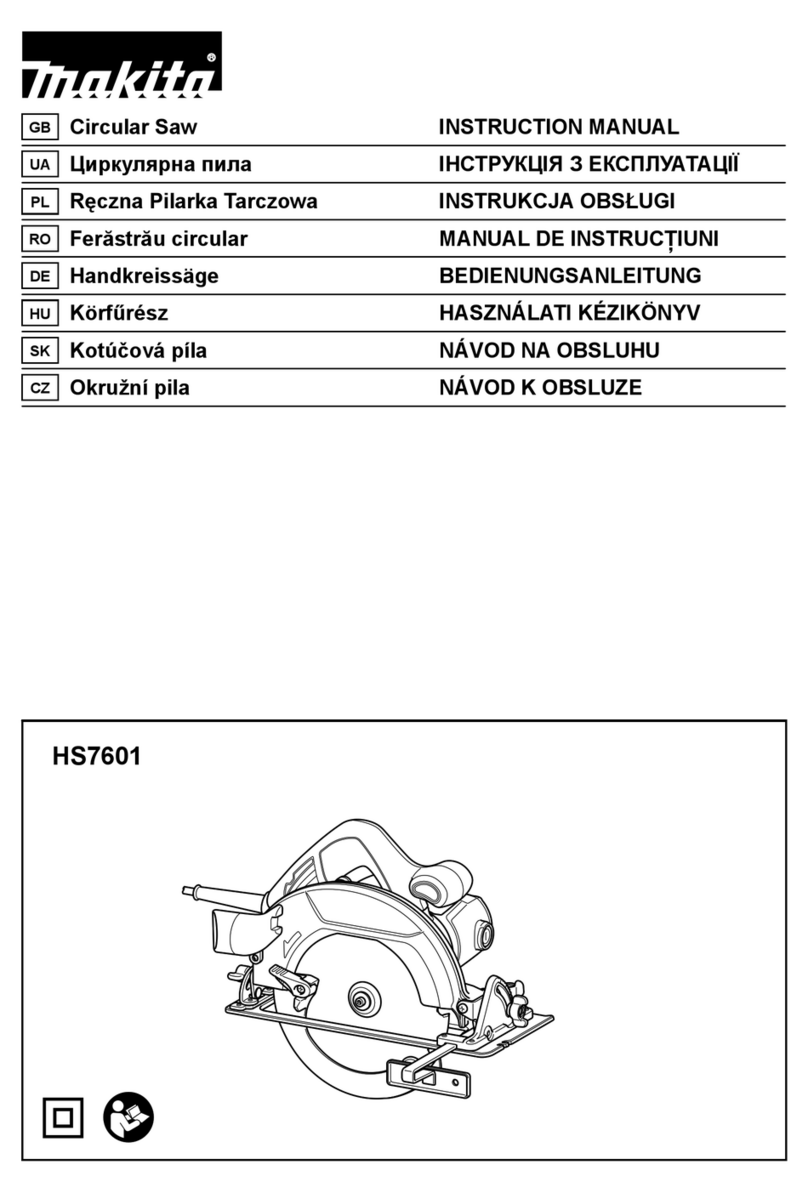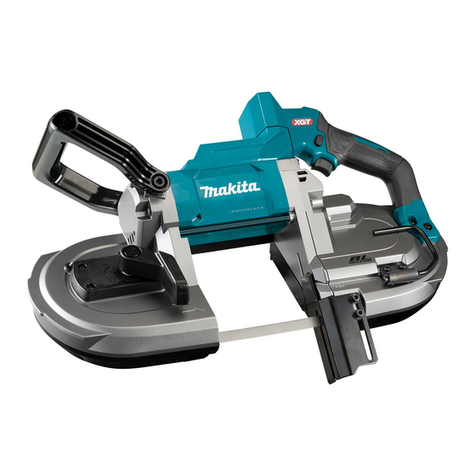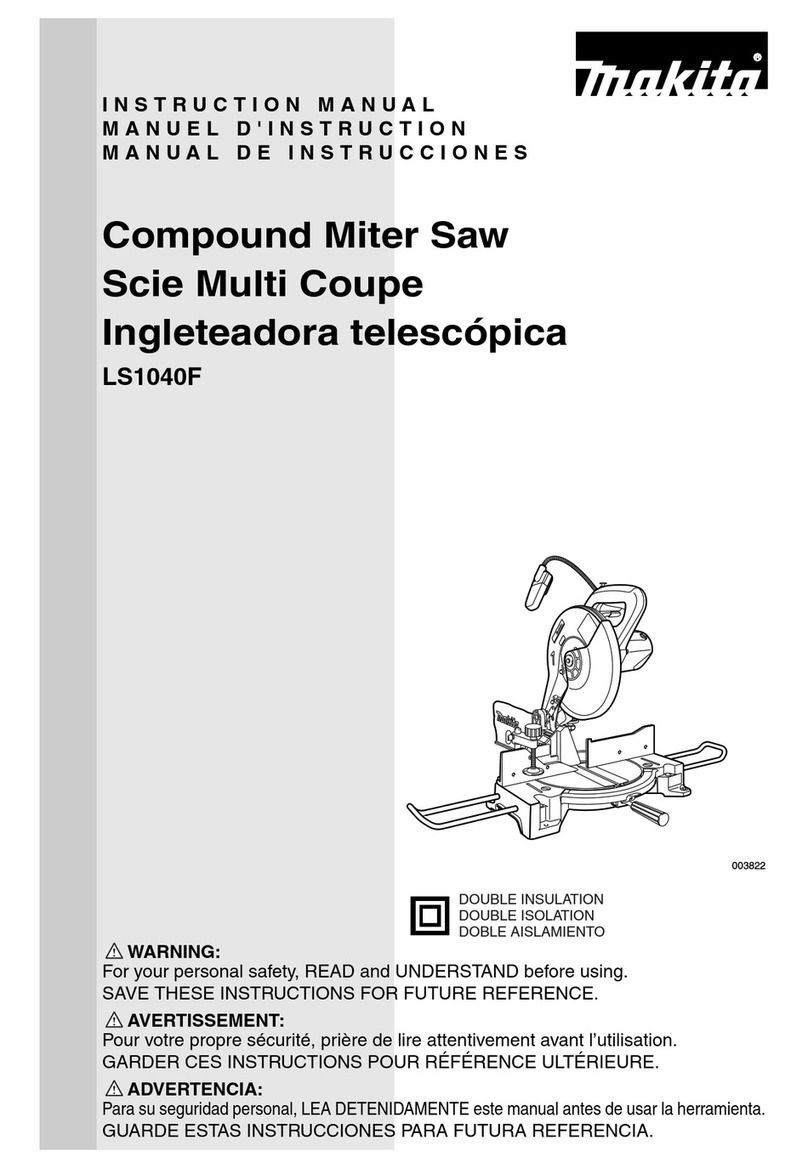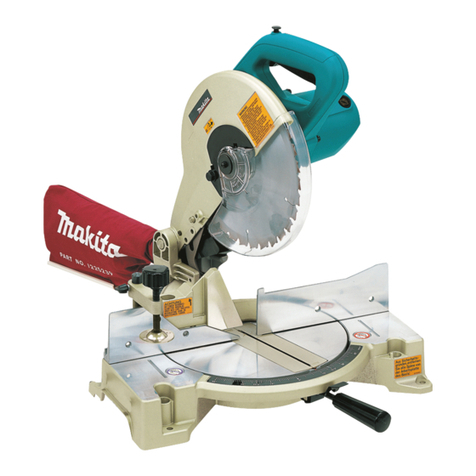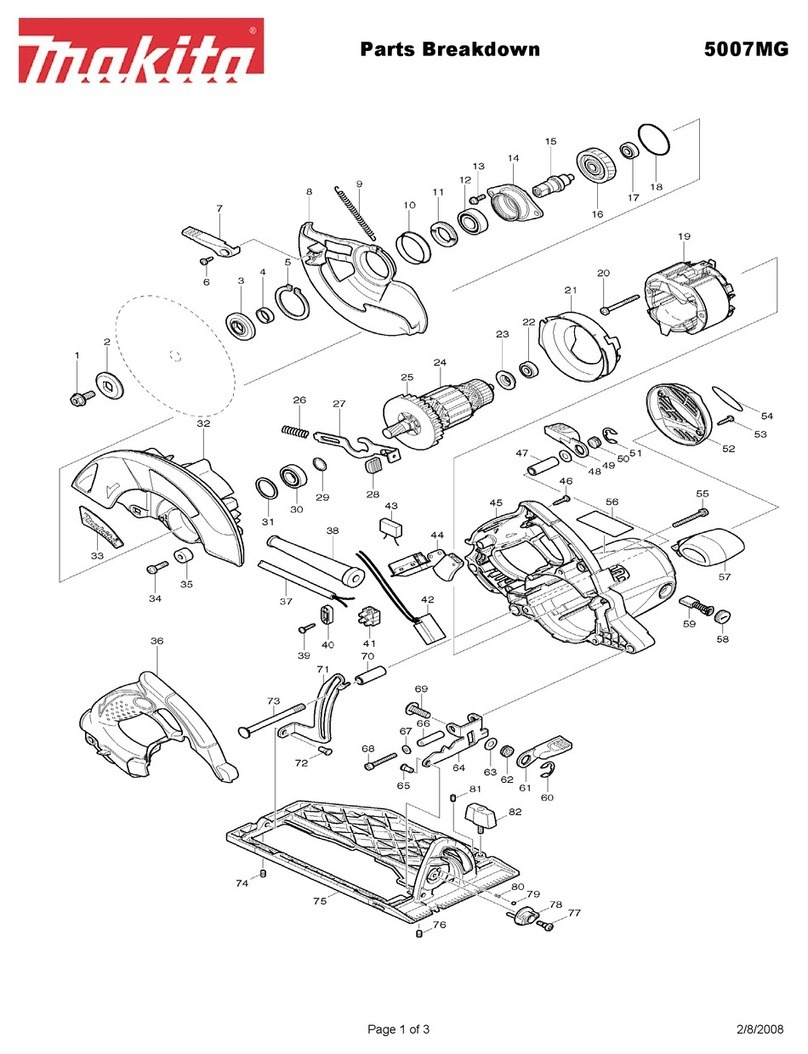
6ENGLISH
Save all warnings and instruc-
tions for future reference.
The term power tool in the warnings refers to your
mains-operated (corded) power tool or battery-operated
( c ord less) pow er tool.
Cordless Metal Cutter safety warnings
Cutting procedures
1 .
DANGER: Keep hands away from cutting area
and the blade. Keep your second hand on auxil-
iary handle, or motor housing. I f both h and s are
holding the saw, they cannot be cut by the blade.
2. Do not reach underneath the workpiece. T h e
guard cannot protect you from the blade below the
w orkpiec e.
3. Adjust the cutting depth to the thickness of
the workpiece. L ess th an a f ull tooth of th e blad e
teeth sh ould be v isible below th e w orkpiec e.
4 . Never hold the workpiece in your hands or
across your leg while cutting. Secure the
workpiece to a stable platform. I t is important to
support the work properly to minimise body expo-
sure, blad e bind ing, or loss of c ontrol.
5 . Hold the power tool by insulated gripping
surfaces, when performing an operation where
the cutting tool may contact hidden wiring.
C ontac t w ith a “ liv e” w ire w ill also make ex posed
metal parts of th e pow er tool “ liv e” and c ould giv e
th e operator an elec tric sh oc k.
6 . W hen ripping, always use a rip fence or
straight edge guide. This improves the accuracy
of c ut and red uc es th e c h anc e of blad e bind ing.
7.
Always use blades with correct size and shape
(diamond versus round) of arbour holes. Blad es
th at d o not matc h th e mounting h ard w are of th e
saw w ill run of f -c entre, c ausing loss of c ontrol.
8 . Never use damaged or incorrect blade wash-
ers or bolt. T h e blad e w ash ers and bolt w ere
specially designed for your saw, for optimum
performance and safety of operation.
Kickback causes and related warnings
— kic kbac k is a sud d en reac tion to a pinc h ed ,
jammed or misaligned saw blade, causing an
unc ontrolled saw to lif t up and out of th e w orkpiec e
tow ard th e operator;
—
when the blade is pinched or jammed tightly by the
kerf c losing d ow n, th e blad e stalls and th e motor reac -
tion drives the unit rapidly back toward the operator;
— if th e blad e bec omes tw isted or misaligned in th e
c ut, th e teeth at th e bac k ed ge of th e blad e c an
d ig into th e top surf ac e of th e w orkpiec e c ausing
the blade to climb out of the kerf and jump back
tow ard th e operator.
Kickback is the result of saw misuse and/or incorrect
operating proc ed ures or c ond itions and c an be av oid ed
by taking proper precautions as given below.
1 . Maintain a rm grip with both hands on the
saw and position your arms to resist kickback
forces. Position your body to either side of the
blade, but not in line with the blade. Kickback
could cause the saw to jump backwards, but
kickback forces can be controlled by the operator,
if proper prec autions are taken.
2.
W hen blade is binding, or when interrupting a
cut for any reason, release the trigger and hold
the saw motionless in the material until the
blade comes to a complete stop. Never attempt
to remove the saw from the work or pull the
saw backward while the blade is in motion or
kickback may occur. I nv estigate and take c orrec -
tiv e ac tions to eliminate th e c ause of blad e bind ing.
3. W hen restarting a saw in the workpiece, centre
the saw blade in the kerf so that the saw teeth
are not engaged into the material. I f a saw blad e
binds, it may walk up or kickback from the work-
piec e as th e saw is restarted .
4 . Support large panels to minimise the risk of
blade pinching and kickback. L arge panels tend
to sag und er th eir ow n w eigh t. S upports must be
plac ed und er th e panel on both sid es, near th e line
of c ut and near th e ed ge of th e panel.
5 .
Do not use dull or damaged blades. U nsh arpened
or improperly set blades produce narrow kerf causing
ex c essiv e f ric tion, blad e bind ing and kic kbac k.
6 . Blade depth and bevel adjusting locking levers
must be tight and secure before making the
cut. If blade adjustment shifts while cutting, it may
c ause bind ing and kic kbac k.
7. Use extra caution when sawing into existing
walls or other blind areas. T h e protrud ing blad e
may cut objects that can cause kickback.
8 . ALWAYS hold the tool rmly with both hands.
NEVER place your hand, leg or any part of your
body under the tool base or behind the saw,
especially when making cross-cuts. I f kic kbac k
occurs, the saw could easily jump backwards over
your hand, leading to serious personal injury.
9 . Never force the saw. Push the saw forward at a
speed so that the blade cuts without slowing.
F orc ing th e saw c an c ause unev en c uts, loss of
accuracy, and possible kickback.
Lower guard function
1 .
Check the lower guard for proper closing before
each use. Do not operate the saw if the lower guard
does not move freely and close instantly. Never
clamp or tie the lower guard into the open position.
If the saw is accidentally dropped, the lower guard may
be bent. R aise th e low er guard w ith th e retrac ting h and le
and make sure it moves freely and does not touch the
blade or any other part, in all angles and depths of cut.
2.
Check the operation of the lower guard spring. If
the guard and the spring are not operating prop-
erly, they must be serviced before use. L ow er
guard may operate sluggishly due to damaged
parts, gummy deposits, or a build-up of debris.
3. The lower guard may be retracted manually
only for special cuts such as “plunge cuts”
and “compound cuts” . Raise the lower guard
by the retracting handle and as soon as the
blade enters the material, the lower guard
must be released. F or all oth er saw ing, th e low er
guard should operate automatically.
4 . Always observe that the lower guard is cover-
ing the blade before placing the saw down on
bench or oor. A n unprotec ted , c oasting blad e
w ill c ause th e saw to w alk bac kw ard s, c utting
w h atev er is in its path . Be aw are of th e time it
takes f or th e blad e to stop af ter sw itc h is released .
